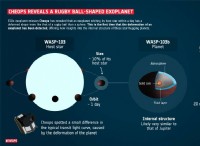Είναι πραγματικά η κατάρρευση της κυκλοφορίας του Ατλαντικού Ωκεανού; Η ιστορία των παγόβουνων αποκαλύπτει μερικές ενδείξεις
1. Στοιχεία από το Iceberg Records :Τα παγόβουνο από τους παγετώνες και τα φύλλα πάγου και μπορούν να μεταφερθούν από τα ρεύματα των ωκεανών. Η παρουσία και η κατανομή των παγόβουνων στο Βόρειο Ατλαντικό μπορεί να παρέχει πολύτιμες πληροφορίες σχετικά με τις προηγούμενες αλλαγές στο AMOC.
2. Events Heinrich :Heinrich events are periods during the last glacial period (around 110,000 to 10,000 years ago) when large volumes of icebergs discharged into the North Atlantic from the Laurentide Ice Sheet (covering parts of present-day Canada and the northern United States). Αυτά τα γεγονότα συμπίπτουν με απότομες μετατοπίσεις στο AMOC και το παγκόσμιο κλίμα.
3. Ταχεία ψύξη: Heinrich events were associated with rapid cooling in the North Atlantic region, and studies of ice cores and sediments have linked these events to changes in AMOC. The collapse of AMOC reduced the transport of warm water to the North Atlantic, leading to cooling and changes in atmospheric circulation patterns.
4. Πιθανές επιπτώσεις: Η μελέτη των προηγούμενων απορρίψεων του παγόβουνου και η σύνδεσή τους με την κατάρρευση του AMOC υπογραμμίζει τις πιθανές συνέπειες των διαταραχών της AMOC. While predicting an exact timeline is difficult, understanding past events and their impacts helps scientists assess potential risks and sensitivities in the current climate system.
5. Συνεχιζόμενη έρευνα: Scientists continue to conduct research on AMOC dynamics, using various methods such as ocean modeling, paleoclimate reconstructions, and observations to improve understanding and make projections.
Είναι σημαντικό να αναγνωρίσουμε ότι η τρέχουσα κατανόηση της συμπεριφοράς της AMOC και οι δυνατότητές της για κατάρρευση εξελίσσεται συνεχώς. While historical records provide valuable insights, projecting future collapse timelines is a complex task, and ongoing scientific research plays a crucial role in assessing the risks and preparing for potential impacts.




